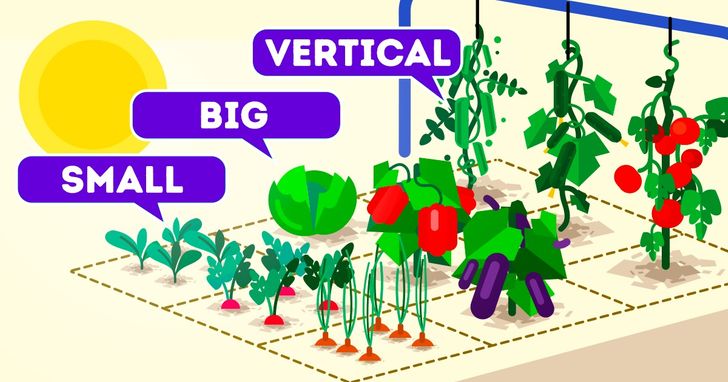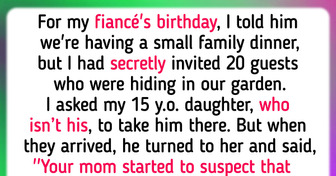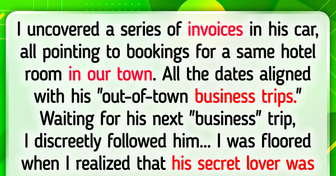What the Kids of 17 Celebrities Famous for Their Unique Appearance Look Like

Do you think that gardening is not for you and your backyard is too small to grow anything but lawn grass? See how professional and amateur gardeners manage to make the most of their tiny garden beds. With our tips and tricks you can build a small but rich garden and enjoy fresh seasonal veggies of your own.
Bright Side shares some useful tips on how to make the most of a small piece of land and enjoy an abundance of fresh seasonal vegetables.
Decide on the range of veggies you would like to grow in your garden. Cabbage, tomatoes, cucumbers, lettuce, radishes, and herbs are just a few crops that can be easily planted and grown together. If you are a novice gardener, choose plants that do not need special care and grow well in the local climate.
It’s a good idea to plant crops that can produce many fruits on just one plant. For example, choose cherry tomatoes instead of big ones and you will be guaranteed plenty of tasty and sweet fruits with a little effort.
There are almost no restrictions on what to plant, but the layout of the vegetable garden is really important. It can be an ordinary garden bed or a raised garden bed. Choose a raised garden bed if you plan to grow root crops. Make sure this area gets enough sunlight during the day.
Split the garden bed into square segments that are the same size. As a rule each square meter of land can be divided into 9-12 square segments. Each crop is planted in its own segment in such a way that all the plants have space for growing and getting enough sunlight.
Divide the vegetables you have chosen into 3 groups: plants that grow vertically (tomatoes, cucumbers, peas, and green beans), big plants that need more space (cabbage, cauliflower, eggplants, and peppers) and small plants (radishes, carrots, spinach, onions, lettuce, and herbs).

Put vertical plants in the farther rows of segments, big plants – in the middle, and small plants – in the front. Make sure that the front segments face the sun most of the day. The main idea of this layout is that vertical plants do not cast a shadow on crops that grow in the middle and in the front rows.
You can plant vertical and big plants, like tomatoes, cucumbers, eggplants, and cabbage, one per square segment as they need a lot space to grow. As for smaller plants, like radishes and herbs, there can be 5, 6 or even more per segment, depending on the size of the mature plants.
Vertical plants need support. It’s a good idea to use wooden sticks for tomatoes and trellis or grids made of durable materials for cucumbers to prevent them from falling onto each other. Using trellis to grow cucumbers and other climbing plants also helps to save space. You can also use a wooden tepee to grow cucumbers or sweet peas.
Take care of fertilization and watering. To make watering easier you can use a system of pipes that will distribute the necessary amount of water and fertilizer in the garden bed or just use a bottle as a dripper.
Draw a map of your future garden before you start planting. The map will help you plan the arrangement of vegetables and herbs. It's better to change the location of plants every season to keep the soil nutritious. If you want to make the most of the soil, replace peas and beans with tomatoes, then plant lettuce and spinach, replace them with cabbage, after that plant root crops, and then come back to peas and beans again.
It’s also a good idea to add a handful of organic granular fertilizer into each segment of soil when planting.
Even if you don’t have a square piece of land at the backyard, you can still build your little garden. You can create it by planting climbing or vertical crops next to your fence which will serve as a support. If you don’t have a backyard, just plant some herbs and leafy greens in a flower pot on your balcony.
The less space you have, the more creativity it takes to build a garden. You can plant small leafy greens or herbs under the trees growing in your garden or if you are brave enough for experiments, use plastic bottles instead of garden beds. They are small, but they can fit enough soil for lettuce, herbs, radishes, or even onions. You can attach these improvised garden beds to a fence and create a small vertical garden like this.
Who said that flower beds are for flowers only? Try planting some herbs or lettuce into your flower bed and amaze your friends and family with a curious landscape design.
If you have no place for a garden at all, place a few flower pots with herbs on your veranda or outdoor kitchen.
A tiny vegetable garden managed in this way is a lot fun and the most amazing part of it is the freedom to experiment. Even if your garden is the size of a postage stamp, by following these little tricks you can reap bounty. Just give it a try!
Have you ever tried to build a garden in a limited space? Do you have some useful tips to share? Feel free to tell us about your experience in the comments!











